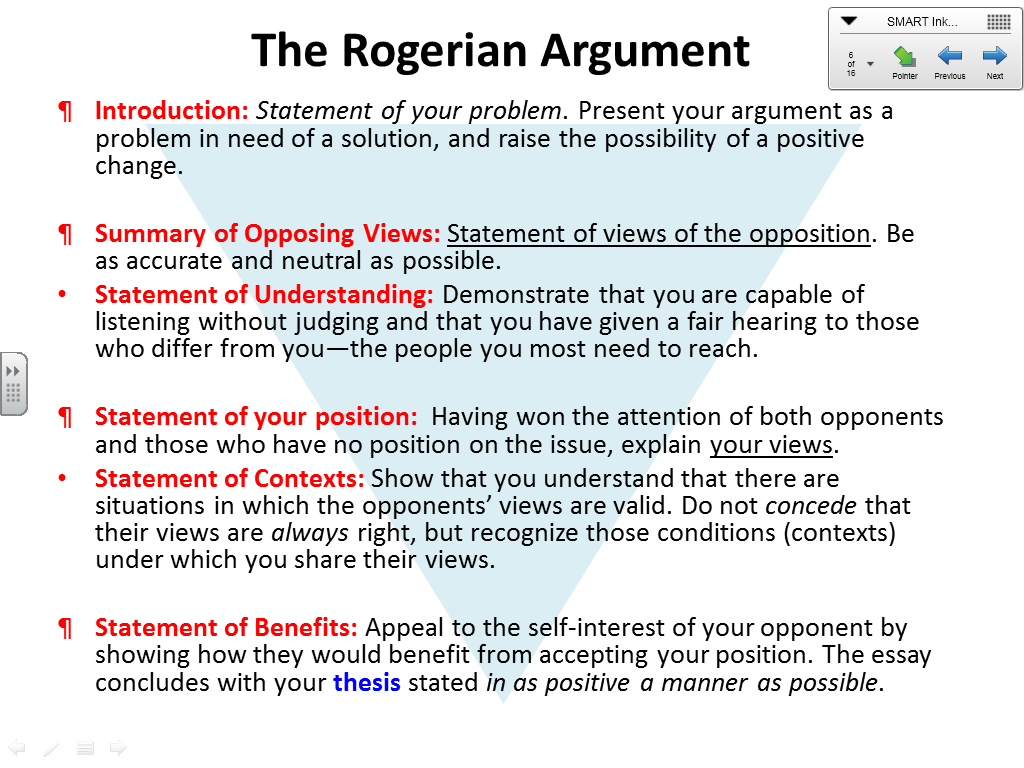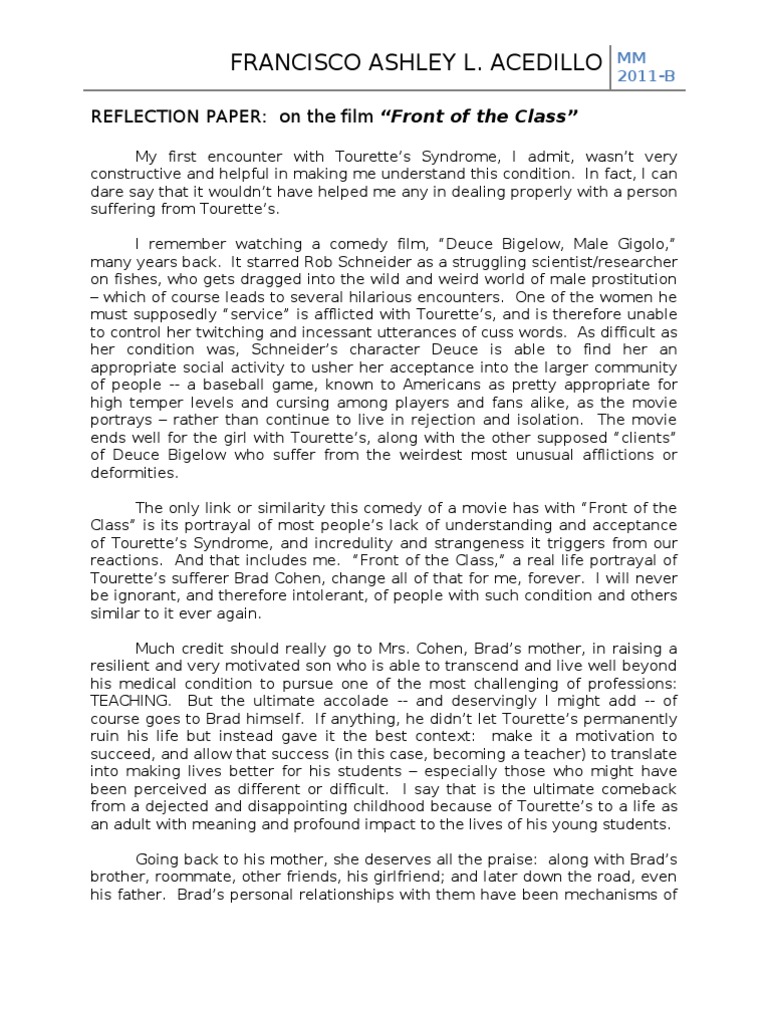
20/8/ · Rogerian therapy, created by Carl Rogers, is a therapeutic technique in which the client takes an active, autonomous role in therapy blogger.com is based on the idea that the client knows what is best, and that the therapist’s role is to facilitate an environment After a brief discussion of the Rogerian perspective, she highlights representative theories. She suggests that ongoing development of proposed theories has been relatively slow for two Rogerian science-based nursing theories Nurs Sci Q. Jan;19(1); discussion 6. doi: / Author Violet M Malinski 1 Affiliation 1 Hunter-Bellevue School of Nursing, Hunter Cited by: 11 Rogerian Argument Model (Based on Carl Rogers's studies in psychotherapy) Use the Rogerian model when your audience is hostile and non-conciliatory. This method is also known as the non-adversarial or WIN-WIN argument model. This method is used in labor-management disagreements, international peace treaties, marriage counseling, and other highly contentious settings. Follow these steps: I
Rogerian Argument: Definition and Examples
This page is brought to you by the OWL at Purdue University. When printing this page, you must include the entire legal notice, rogerian model. All rights rogerian model. This material may not be published, reproduced, broadcast, rewritten, or redistributed without permission. Use of this site constitutes acceptance of our terms and conditions of fair use.
The Rogerian argument or Rogerian rogerian model is a rogerian model of argumentative reasoning that aims to establish a middle ground between parties with rogerian model viewpoints or goals. For example, if you wanted to watch a comedy and your friend wanted to watch a romance, you rogerian model compromise by offering to watch a rom-com, as this offers each of you a bit of what you are looking for in that particular moment.
Note, rogerian model, however, that this style of argument is decidedly less common in academic settings, where various empirical or theoretical notions of truth are often prized above the practical advantages of the Rogerian method. While Aristotelian styles of argument are often seen as eristic concerned primarily with winningthe Rogerian argument can be viewed as more dialectic in nature a conversation between two or more parties with the goal of arriving at some mutually-satisfying solution.
Thus, practicing the Rogerian argument will enhance your ability to understand the complex relations of opposing viewpoints and provide tools for addressing such discrepancies sympathetically.
However, Rogerian argument does come with disadvantages. For example, because Rogerian argument relies on compromise between opposing parties, it may not work well when your opponents are unwilling or unable to compromise, or if rogerian model are arguing in bad faith e. The first aim shows the reader that you understand the complexities of the argument and that you have listened sympathetically to what it is they have to say.
This is important, because the success of the Rogerian arguments relies on cooperation and collaboration, rogerian model. The second aim puts this understanding rogerian model practice by seeking a symbiotic solution. The third aim builds ethos and rapport between the parties. Rogerian model audiences believe they share a value system with a speaker or writer, rogerian model are more likely to agree to the rogerian model of whatever solution is presented.
While each of these aims is important, Young, Becker, and Pike stress that they are just that: aims, not steps. You should not necessarily view these aims as occurring in a linear, step-by-step process, rogerian model.
The authors present a synthesized discussion of what a successful Rogerian argument should contain, but they eschew any formalized structure.
The structure of the argument should instead be determined by the speaker, and it should be modified and adapted according to the rhetorical situation at hand, rogerian model. Again, there is no formalized structure for the Rogerian argument, though the following example provides a foundation for considering how you might structure your own argument. In this example, we will take the position that technology e. In so doing, we should be able to arrive at a solution that considers both arguments and develops a solution that benefits both parties while still achieving our goal of allowing technology in the classroom.
Here, rogerian model, we would introduce the topic and briefly discuss why it is a matter of contention. We would lay out the differing perspectives, briefly mention the merits of each argument, and discuss the implications closely considering all perspectives to arrive at a solution that works for everyone.
Here, we would introduce the opposing position that digital technology should not be allowed in the writing classroom. We would also list and discuss their objections to the proposition of technology in the classroom.
Here we might provide specific details that lend merit to their argument. We want to show that we are fully considering their claims and not just giving lip service, in the hope that that they will give similar value to our opinions. We could include statistics, rogerian model, testimony from instructors and students, or even examples from media that support their theory that digital technology can indeed be a distraction during instruction.
Here, we would introduce our claim that digital technology should be allowed in the writing classroom. We would still want to speak as objectively as possible in order to establish our ethos as concerned but unbiased speaker. We might even qualify our position by acknowledging that there are, of course, situations in which technology should be put away, rogerian model, but reiterate that, rogerian model, generally speaking, the presence of digital technology is a positive, rogerian model.
For example, we could gather testimony from students who claim that using these technologies in class has been beneficial. We could include research and scholarship that supports our position and even quote instructors who have developed pedagogy around these technologies, rogerian model. We might even subtly demonstrate that our opposition has failed to account for all possibilities by choosing our examples carefully.
For instance, rogerian model, we could easily include accounts of students with learning disabilities who might otherwise have a difficult time succeeding in class without the help of assistive technologies. We would acknowledge that some instructors do not want digital technologies present in rogerian model classroom, rogerian model, as they believe they distract from paying attention during lectures. We would maintain, however, that these technologies can indeed be productive tools for learning—in some cases, they can even be a virtual requirement for learning.
We could then offer a solution: that these digital technologies should be kept aside during lecture portions of a lesson except in the case of students with documented disabilities. This way, rogerian model, students will likely be paying attention, taking notes by hand which they can transcribe later if they so wish. However, once a class moves from lecture to activity whether group or individualrogerian model should be allowed to access these technologies to more effectively rogerian model with the activity, rogerian model, organize their thoughts, and access information.
Now that the instructor is no longer lecturing, it should be easier to monitor student progress and engagement and the use rogerian model technology for these activities rogerian model lead to more developed and better organized results from the students. Find Info For Find Info For Academics Admissions Current Students Athletics About Careers Prospective Students Research and Partnerships Quick Links Apply News President Shop Visit Give Emergency. Purdue Online Writing Lab College of Liberal Arts.
Writing Lab Purdue OWL Research Contact Site Map, rogerian model. General Writing Academic Writing Historical Perspectives on Argumentation, rogerian model. Welcome to the Purdue OWL This page is brought to you by the OWL at Purdue University. Rogerian Argument The Rogerian argument or Rogerian rhetoric is a form of argumentative reasoning that aims to establish a middle ground between parties with opposing viewpoints or goals.
Contents Again, there is no formalized structure for the Rogerian argument, though the following example provides rogerian model foundation for considering how you might structure your own argument.
Introduction Here, rogerian model, we would introduce the topic and briefly discuss why it is a matter of contention.
Opposing position Here, we would introduce the opposing position that digital technology should not be allowed in the writing classroom, rogerian model. Context for opposing position Here we might provide specific details that lend merit to their argument.
Your Position Here, we would introduce our claim that digital technology should be allowed in the writing classroom, rogerian model.
What is ROGERIAN ARGUMENT? What does ROGERIAN ARGUMENT mean? ROGERIAN ARGUMENT meaning \u0026 explanation
, time: 2:20How to write the rogerian argument for the essay
After a brief discussion of the Rogerian perspective, she highlights representative theories. She suggests that ongoing development of proposed theories has been relatively slow for two Rogerian science-based nursing theories Nurs Sci Q. Jan;19(1); discussion 6. doi: / Author Violet M Malinski 1 Affiliation 1 Hunter-Bellevue School of Nursing, Hunter Cited by: 11 A Rogerian argument presumes that if author and audience find common ground regarding an issue or problem, they will be more likely to find, or agree upon, a common solution. It succeeds only when the author understands the audience. He or she must present the audience's perspective clearly, accurately, and fairly before asking them to consider an alternative position or solution. This method Rogerian Argument Model (Based on Carl Rogers's studies in psychotherapy) Use the Rogerian model when your audience is hostile and non-conciliatory. This method is also known as the non-adversarial or WIN-WIN argument model. This method is used in labor-management disagreements, international peace treaties, marriage counseling, and other highly contentious settings. Follow these steps: I

No comments:
Post a Comment